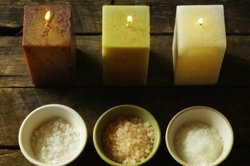Similarities and differences of salts
Salts form an enormously large class of substances in chemistry. It is important to know the similarities and differences between salts.

All salts have these similarities
- One of the most basic similarities between salts is that they are ionic compounds. This means that they consist of a negatively charged particle - an anion - and a positively charged particle - called a cation. The ionic bond is based on the electrostatic attraction between the positive and negative ion.
- Salts crystallize in a crystal lattice with a fixed order of the ions.
- The anion and cation are always a metal and a non-metal. In most cases the metal forms the cation.
- What all salts have in common is that they are externally neutral, i.e. that is, the charges of the anion and the cation must cancel each other out.
Differences of salts
- Salts can be made up of almost any element. This is one of the main differences between different salts. In addition to the well-known table salt NaCl, there are also salts such as CdI2 or CaCO3.
- Anion and cation do not necessarily have to have the same charge, as is the case with potassium chloride (K.+ and Cl-). There are also numerous examples in which one of the ions is more highly charged. But since a charge balance is required, the chemical composition is accordingly, z. B. at CaF2 (Approx2+ and 2x F-) or Well2CO3 (2 x Na+ and Co32-).
- A salt can also contain more than two types of ions, as in NaAl (SO4)2 (N / A+, Al3+ and 2 x SO42-). These are called mixed salts.
- Salts can be colorless or have a wide variety of colors. The color is usually determined by one of the ions. Thus, potassium permanganate has KMnO4 an intense purple color, while potassium dichromate K2Cr2O7, also a potassium salt, has a strong orange.
- There are also big differences in the structure: Depending on the chemical composition, type of ion and size ratio of the ions, salts crystallize in different crystal structures.
Salts in chemistry - simply explained
Salts in chemistry are special compounds that are also used every day ...
How helpful do you find this article?


